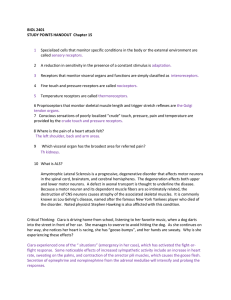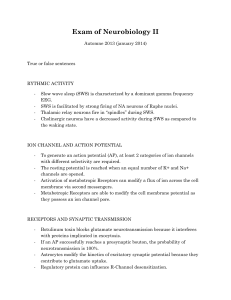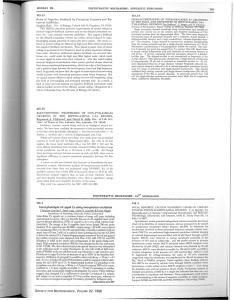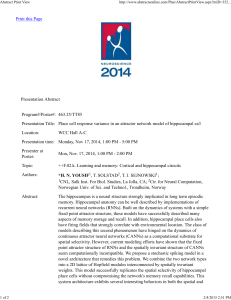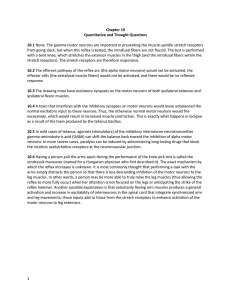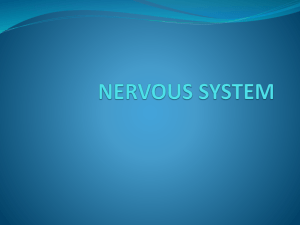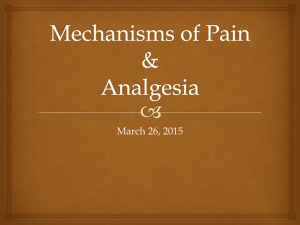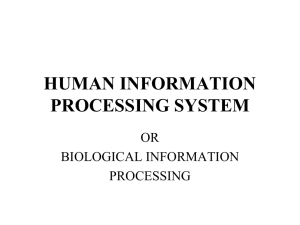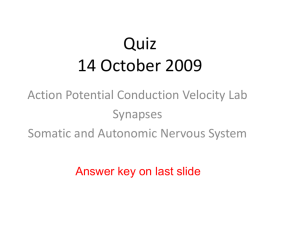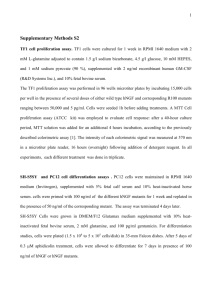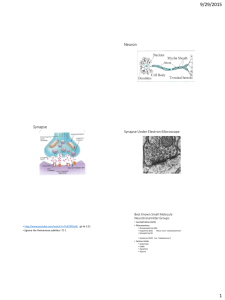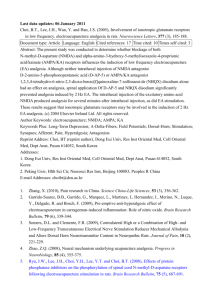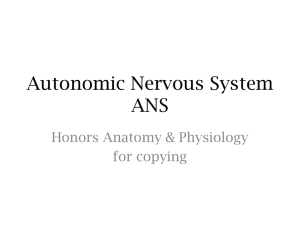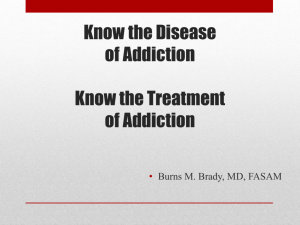Neuroscience 26 Exam 3 Suggested brief answers
advertisement
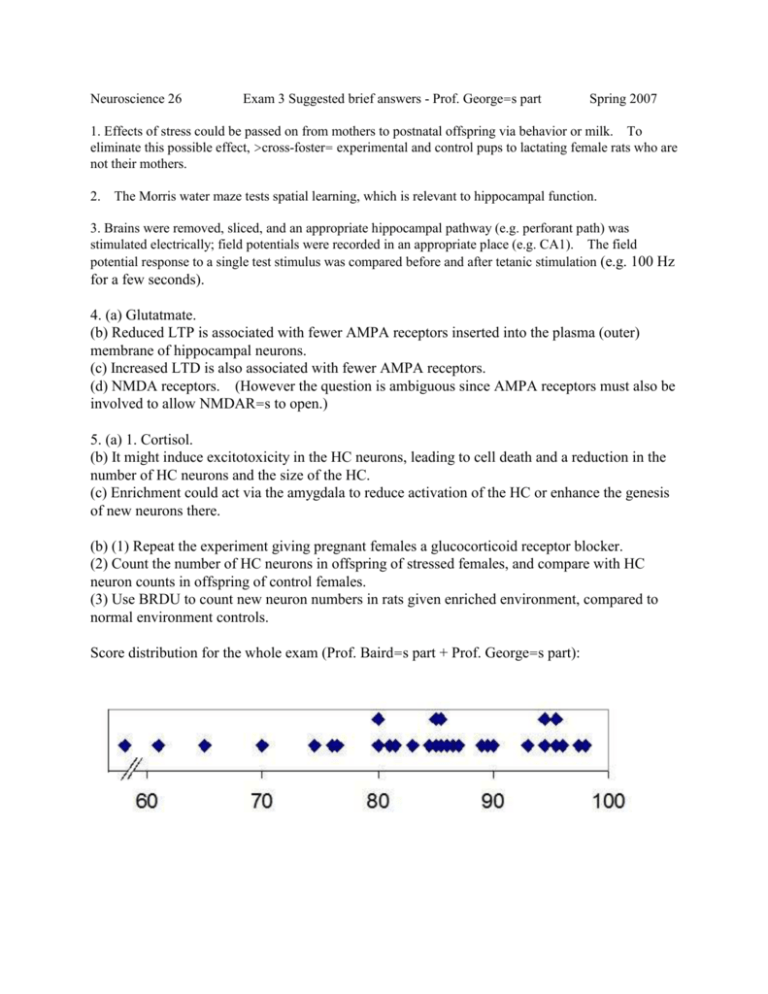
Neuroscience 26 Exam 3 Suggested brief answers - Prof. George=s part Spring 2007 1. Effects of stress could be passed on from mothers to postnatal offspring via behavior or milk. To eliminate this possible effect, >cross-foster= experimental and control pups to lactating female rats who are not their mothers. 2. The Morris water maze tests spatial learning, which is relevant to hippocampal function. 3. Brains were removed, sliced, and an appropriate hippocampal pathway (e.g. perforant path) was stimulated electrically; field potentials were recorded in an appropriate place (e.g. CA1). The field potential response to a single test stimulus was compared before and after tetanic stimulation (e.g. 100 Hz for a few seconds). 4. (a) Glutatmate. (b) Reduced LTP is associated with fewer AMPA receptors inserted into the plasma (outer) membrane of hippocampal neurons. (c) Increased LTD is also associated with fewer AMPA receptors. (d) NMDA receptors. (However the question is ambiguous since AMPA receptors must also be involved to allow NMDAR=s to open.) 5. (a) 1. Cortisol. (b) It might induce excitotoxicity in the HC neurons, leading to cell death and a reduction in the number of HC neurons and the size of the HC. (c) Enrichment could act via the amygdala to reduce activation of the HC or enhance the genesis of new neurons there. (b) (1) Repeat the experiment giving pregnant females a glucocorticoid receptor blocker. (2) Count the number of HC neurons in offspring of stressed females, and compare with HC neuron counts in offspring of control females. (3) Use BRDU to count new neuron numbers in rats given enriched environment, compared to normal environment controls. Score distribution for the whole exam (Prof. Baird=s part + Prof. George=s part):


